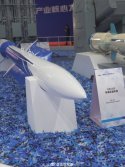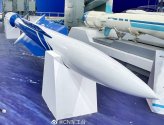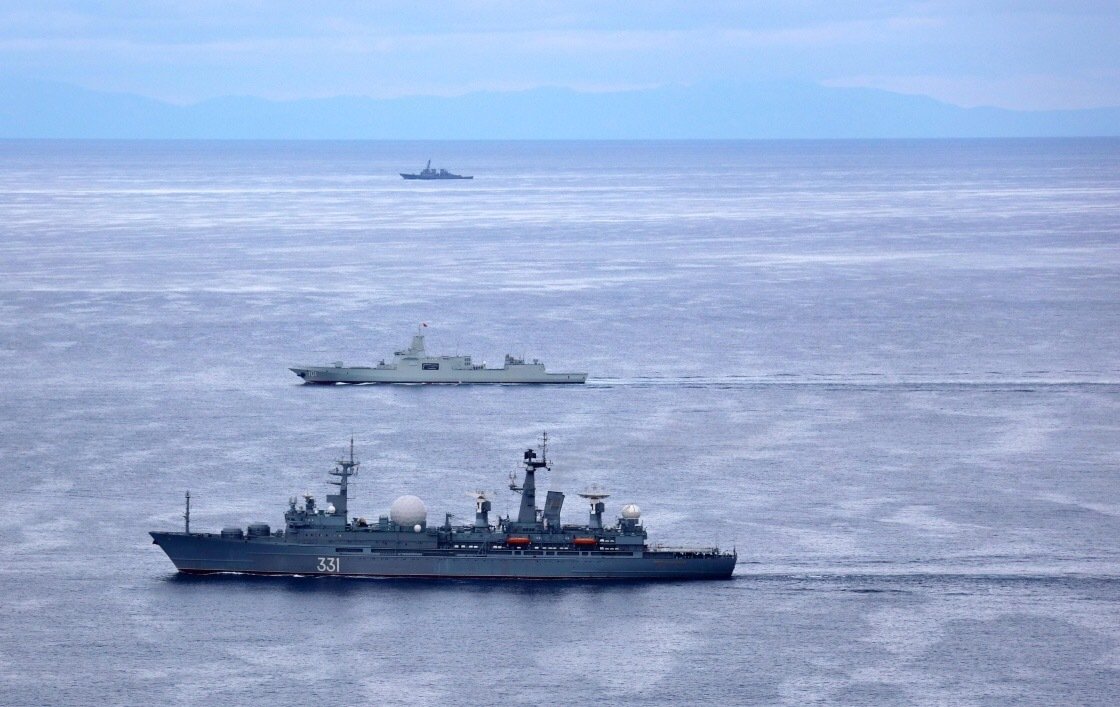The difference in height above sea level between the positions of these 346s correspond to what lateral distance for let's say something that is skimming only 2m above sea level? I do not believe it is much at all. Maybe translates to 2 or 3 seconds of difference at mach 2. Cant be bothered working it out.
I can understand why plenty of modern destroyers want to place their main AESAs as high up as possible for the extra few seconds against supersonic sea skimmers but at the end of the day it's a compromise between the slight detection advantage by seconds and factors like how potent these radars are. The American and Chinese units are POTENT and overpowered compared to the variations of Sampsons and EL/Ms of the world. Shandong may be the only vessel to place top tier, overpowered AESAs this high up and clearly they consider the time advantage to be worthy of doing this task but the Type 055's AESAs are more powerful, heavier, and larger than the ones placed on Shandong.
It's a good fleet design choice only because the carriers are already significantly taller. Even if they could put 055's 346 as high up as a Sampson is for a Daring, it would still not be as high up as the 346 for the Shandong. So yeah the distance and time advantage yielded is better (not that it's possible to place 346 high up for the 055!). Overall, this is the highest available lookout position for the fleet and I consider the choice to be one where they prefer to take advantage of uniquely high lookout position for nothing more than having one, than it is for actual usefulness in 2 or 3 seconds advantage over the 055's 346 positions.
For a subsonic stealth sea skimmer (which is the thing to counter), this translates to fairly significant distance and time advantage though.
There is a radar horizon calculator.
Going to assume that the missile is coming at 10 meters height, the 055's Type 346 radars at 17 meters height, while the Shandong's Type 346 radars are at 60 meters height. I don't really know what is the Shandong's radar height for its Type 346 so I am making up that number.
At 17 meters radar height, the target is radar visible at 30 kilometers. At 60 meters radar height, it is 45 km. Let's assume the missile is coming in at Mach 2, or 0.7 kilometers per second. At 30 kilometers radar visible range, you got 42 seconds to react. At 45 kilometers, you got 64 seconds to react.
I don't think Mach 2 missiles are going to come in at 2 meters. That's too fast for too low. Based on some modern supersonics, the lowest I would be willing to go would be 5 meters but 10 meters is more likely. Anything like 2 to 5 meters height should be subsonic.
If a destroyer puts its AESA at 30 meters height, then target becomes radar visible at 35km, for a sea skimming target at 10 meters height, and with a Mach 2 target that would be 50 seconds reaction time. For 35 meters height, that is about 37 km, for 52 seconds reaction time. So the difference of putting the AESA at 17 meters vs. 30 meters is about 8 seconds worth of reaction time. If its subsonic, then at Mach 0.9, that's about 0.3 km/s.
However in reality, ships also have secondary radars that are optimized for searching for sea skimmers and closer ranged engagements. For the Type 055, its secondary X-band AESA on its integrated mast is probably about 30 meters in height. For the 052C/D, the Type 364 Sea Gull radar is probably about 34 to 35 meters in height. For Burkes that are equipped with the SPQ-9B (not all currently are but some), the Spook 9 is about 36 to 37 meters in height. The Type 364 and the Spook 9s are not AESAs but it doesn't matter as long as they do their job. At this point you have to recalculate the actual detection and engagement ranges based on these secondary radars.
In the case of the Liaoning and Shandong, they each have a pair of Type 364 radars and a Type 382 radar that's higher than the Type 346, which further extends the radar horizon. For 003, it has a quartet of X-band AESAs higher than the Type 346s, with its crown mast dedicated to CECs and ESM panels.
There are two other things that can extend the radar horizon on these ships. That's where the ESM comes in. On the 052C/D and 055, the ESM masts occupy the highest points of the ship. On the 055 its the stalk sticking out above the integrated mast. On the 052C/D, its the small tall mini-mast behind the Type 364 radar and goes above it. The extended height allows the ESM to pick up the radar and radio (datalink) emissions of the threat missile as far as possible as their further extended radio horizons allow.
The final thing that needs to be mentioned is how far these radars also use inversion layers or atmospheric ducting. This phenomenon is where density and thermal layers in the atmosphere create a wave guide that refracts radar waves over the horizon. It so happens that the Type 366 radars on the 052C/D and Type 054A employs this principle, copied from the Mineral ME Bandstand radars used with the Sovremennys. The question is to what extent other Chinese ESM and radars have incorporated this. There is also this question if other radars in the West would exploit this principle. Its a situational thing but it so happens the Western Pacific gives those situations.



